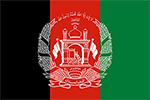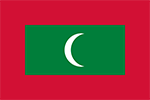At their Eighteenth SAARC Summit held in Kathmandu on 26-27 November 2014, the Heads of State or Government expressed their strong determination to deepen regional integration for peace, stability and prosperity in South Asia by intensifying cooperation, inter alia, in trade, investment, finance, energy, security, infrastructure, connectivity and culture; and implementing projects, programmes and activities in a prioritized, result-oriented and time-bound manner. The Leaders renewed their commitment to achieve South Asian Economic Union (SAEU) in a phased and planned manner through a Free Trade Area, a Customs Union, a Common Market, and a Common Economic and Monetary Union. They acknowledged that SAARC Member States, particularly the Least Developed and Landlocked Member States, face structural constraints and challenges that result in their weak productive capacity affecting their competitiveness in external trade due to, among others, high trade and transit cost. They committed to enhance support to the Least Developed and Landlocked Member States in their development efforts, with a view to ensuring equitable benefits of free trade arrangements. In this context, they agreed to effectively implement the existing preferential facilities under SAFTA and SATIS.
The Eighteenth SAARC Summit directed SAFTA Ministerial Council and SAFTA Committee of Experts to accelerate free trade in goods and services in the region putting into operation simplified and transparent rules of origin; implementation of trade facilitation measures; harmonization of standards relating to Technical Barriers to Trade (TBT) and sanitary and phyto-sanitary measures; harmonized, streamlined and simplified customs procedures; elimination of non-tariff and para-tariff barriers; and smooth and efficient transit and transport facilities. They also called for early operationalization of SATIS by finalizing the schedule of commitments.
Connectivity
The Eighteenth SAARC Summit welcomed the significant progress towards finalization of the SAARC Motor Vehicles Agreement and SAARC Regional Railways Agreement. The Heads of State or Government agreed to hold a Meeting of the Transport Ministers within three months in order to finalize the Agreements for approval. They renewed their commitment to substantially enhance regional connectivity in a seamless manner through building and upgrading roads, railways, waterways infrastructure, energy grids, communications and air links to ensure smooth cross-border flow of goods, services, capital, technology and people. The leaders emphasized the need for linking South Asia with contiguous regions, including Central Asia, and beyond by all modes of connectivity and directed relevant authorities to initiate national, regional and sub regional measures and necessary arrangements.
Regional Economic Integration Study (Phase-II)
As mandated by SAARC Leaders and on the request of SAARC Secretariat, Kathmandu, the Asian Development Bank (ADB) conducted a Study on Regional Economic Integration for SAARC in 201 The Forty-first Session of Standing Committee considered and approved the Draft Study on Regional Economic Integration (Phase-II) concluded with the financial and technical assistance of ADB. The Study was launched during the Opening Session of the Council of Ministers held in Kathmandu on 25 November 2014. As recommended by the Standing Committee, two SAARC-ADB Special Meetings of representatives of Commerce and Finance Ministries on Regional Economic Integration Study (Phase-II) have been held in Goa, India on 14-15 April 2015 and in Malé, Maldives on 27-28 January 2016 to prioritize the recommendations contained in the Study for implementation. After in-depth deliberations, the First Special Meeting decided to implement the following recommendations simultaneously on a priority basis:
- Reduction/Removal of Non-Tariff Barriers (NTBs) and Para-Tariff Barriers (PTBs)
- Energy Cooperation
- Trade Facilitation Measures
- Investment Cooperation
- Reduction of products in the Sensitive Lists
- SAARC Agreement on Trade in Services (SATIS)
- Improvement in Connectivity (rail, road, air, maritime) among Member States
The First Meeting recommended that the timelines for action to be taken for implementation of above prioritized recommendations may be taken up by the forthcoming Tenth Meeting of SAFTA Committee of Experts. However, noting the fact that the SAFTA Meetings have not been held so far, the Second SAARC-ADB Special Meeting held in the Maldives on 27-28 January 2016 proposed timelines for implementation of the identified recommendations for consideration of higher authorities of SAARC. The Meeting also noted that several SAARC Mechanisms are already engaged in activities which would lead to further regional economic integration. These Meetings included those of SAARC Finance Ministers/Finance Secretaries, SAFTA Ministerial Council comprising SAARC Commerce Ministers, Meetings organised by South Asian Regional Standards Organisation (SARSO) and SAARC Arbitration Council (SARCO). The deliberations of these Meetings contribute towards implementation of some of the prioritized recommendations contained in the Study. The Meeting noted the status of implementation of prioritized recommendations by Member States and recommended that action on the pending issues may be taken by all Member States expeditiously under intimation to the SAARC Secretariat.
The Third SAARC-ADB Special Meeting on Regional Economic Integration Study (Phase-II) is scheduled to be held in Islamabad, Pakistan on 12-13 April 2017. The Theme of the Meeting would be “Transport Connectivity”. Some of the important issues to be discussed during the Third Meeting would include the Role of Transport Connectivity in Trade Facilitation for moving towards South Asian Economic Union (SAEU); Review of Progress in launching Indian Ocean Cargo and Passenger Ferry Service; Review of Progress in the implementation of identified recommendations of the SAARC-ADB Regional Economic Integration Study (Phase-II) for moving towards South Asian Economic Union (SAEU); and discussion on future course of action.
pdf Agreement on South Asian Free Trade Area (SAFTA (282 KB) )
SAARC Agreement on Trade in Services (SATIS)
Committee on Economic Cooperation (CEC)
The CEC comprising Trade/Commerce Secretaries of SAARC Member States was established to oversee and monitor the trade and economic cooperation under the framework of SAARC in 1991. Fifteen Meetings of CEC have been held so far. The Sixteenth Meeting of the Committee on Economic Cooperation will be hosted by Nepal in 201
South Asian Regional Standards Organisation (SARSO)
SAARC Arbitration Council (SARCO)
Cooperation in the field of Finance
The First Meeting of SAARC Finance Ministers approved the establishment of an Inter-Governmental Expert Group on Financial Issues with a mandate to develop its draft Terms of Reference based on the areas outlined by the SAARC Leaders at their Thirteenth Summit, including development of a roadmap for achieving the South Asian Economic Union (SAEU) in a gradual and phased manner.
The Seventeenth SAARC Summit (Addu, Maldives, 10-11 November 2011) directed the SAARC Finance Ministers to chart a proposal that would allow for greater flow of financial capital and intra-regional long-term investment. The Fifth Meeting of SAARC Finance Ministers deliberated on the directive of the Summit and recommended that the IGEG on Financial Issues may first look into the matter and make suggestions to be considered by the higher SAARC bodies.
Following the Thirteenth Summit directive, the Informal Meetings of the SAARC Finance Ministers are being held on the sidelines of ADB Governing Board Meetings. A theme for the meeting is usually suggested by the SAARC Chair and a draft agenda is then circulated by the Secretariat. The Tenth Informal Meeting of SAARC Finance Ministers was held in Frankfurt, Germany on 3 May 2016 on the sidelines of Annual Meeting of ADB. The theme for the Tenth Informal Meeting was “Financing Development of Economic Corridors in the SAARC Region.” The Eleventh Informal Meeting of SAARC Finance Ministers is scheduled to be held in Yokohama, Japan on 5 May 2017 on the sidelines of the Fiftieth Annual Meeting of Asian Development Bank. The focus of the Meeting would be on Fifty Years of ADB and ADB Operations in SAARC Countries.
The Seventh Meeting of the IGEG (SAARC Secretariat, 20-21 May 2014) reviewed progress on Public Debt Management; Development of Capital Market in South Asia; and SAARC ADB Studies on Second Phase of Study on Regional Economic Integration; and Study on Development of a Regional Coordinated Surveillance Mechanism (RCSM). It reviewed the status of preparation of comprehensive project proposals on following Concept Papers on: Financial Inclusion-Access to financial services and credit to financially excluded sections of the society (India); Experiences of Financing for Infrastructural Development (Pakistan); Combating Money Laundering and Terrorist Financing (Sri Lanka). It held discussion on sharing of experience and best practices in the financial sector and on preparing a proposal to allow for greater flow of financial capital and intra-regional long-term investment. It also reviewed progress on swap arrangement and deliberated on paper circulated by Bangladesh at the Fifth Meeting of SAARC Finance Ministers (Dhaka, 30 January 2012) on “Economic Integration in the SAARC Region: Towards South Asian Economic Union (SAEU)”.
Two Meetings of SAARC Public Debt Managers’ Forum have been held. The Third Meeting is scheduled to be held in Kabul in 2015.
Study on codification of variations in the level of development of Capital Markets in SAARC Member States has been conducted with the financial and technical assistance of ADB.
The Fifth Meeting of SAARC Finance Ministers (Dhaka, 30 January 2012) agreed that the region should evolve joint strategies for facing the impact of global economic crisis in a spirit of mutual cooperation. There is need to initiate effective and coordinated policy action in monetary and fiscal arena to avoid possible risks. It may be necessary to examine the need to develop a regional coordinated surveillance mechanism to forecast the fall-out of external shocks which may create an economic and financial dislocation within the SAARC region. For this purpose, a detailed study may be conducted on possible regional strategy with the help of regional/international financial institutions like ADB. Accordingly, a Study is being conducted with the help of ADB. An Inception Workshop for the Study (SAARC Secretariat, 3-4 October 2013) agreed that there is a need for a regional surveillance mechanism because international surveillance systems fail to notice many important signals at the country or regional levels.
The Sixth Meeting of SAARC Finance Ministers was held in Colombo on 30 August 2013. The Meeting recommended accelerating the pace of economic and financial cooperation among the Member States of SAARC. The Finance Ministers:
- endorsed the action plans enumerated in the SAARC Finance Secretaries’ Meeting;
- noted that most of the Member Countries have managed crisis situations well, the strong indicators being reduction in fiscal deficit, reduction in the level of poverty;
- appreciated the SWAP arrangement for currency put in place by India and noted that Bhutan has already signed an MOU with Reserve Bank of India for US$ 100 million under the arrangement;
- private sector may be involved more and more in the economic and financial integration in SAARC, as their role becomes critical in the success of SAFTA process;
- sub-regional cooperation such as SASEC in which ADB is involved has done good work and such cooperation may be encouraged;
- NTMs/PTMs acting as NTBs/PTBs must be addressed; and
- infrastructural development, such as Railways and motor ways and energy grid are important for facilitating regional economic and financial integration.
The Eighth Meeting of IGEG on Financial Issues held in Islamabad on 20-21 July 2016, reviewed the Progress of Implementation of Decisions taken as well as Matters considered at the Seventh Meeting of SAARC Inter-Governmental Expert Group on Financial Issues (SAARC Secretariat, 20-21 May 2014) which included Public Debt Management; Development of Capital Market in South Asia; SAARC-ADB Study on Regional Economic Integration (Phase-II); SAARC-ADB Study on Development of a Regional Coordinated Surveillance Mechanism (RCSM); Draft Text of SAARC Agreement on Promotion and Protection of Investments; and sharing of experience and best practices in the financial sector.
The Eighth Meeting of SAARC Finance Ministers was held in Islamabad on 26 August 2016 to review progress in the implementation of their earlier decisions. The Meeting emphasized the need for:
- Accelerating the process towards South Asian Economic Union (SAEU) in a phased and planned manner as mentioned in the Declaration of 18th SAARC Summit.
- Ensuring implementation of decisions recommended by the Member States at various SAARC mechanisms in order to realize the goals of SAARC Charter to promote the welfare of the people of South Asia and to accelerate economic growth, social progress and cultural development in the region.
- Strengthening regional trade through full and expeditious implementation of South Asian Free Trade Agreement (SAFTA) in order to achieve deeper integration and move towards SAEU and also to bring down tariffs, eliminate NTBs/PTBs, reduce sensitive lists for enhanced intra-regional trade under SAFTA;
- Operationalize the SAARC Agreement on Trade in Services without further delay by finalizing the schedules of specific Commitments;
- Finalize Text of the SAARC Agreement on Promotion and Protection of Investments;
- Initiate discussion on widening the scope of SAARC Agreement on Avoidance of Double Taxation and Mutual Administrative Assistance in Tax Matters.
- Emphasized the need for harmonization of customs procedures and documentations in the region to facilitate movement of goods across the borders.
- Underlined the need for improved connectivity in the region including through land, sea and air route and early signing of Motor Vehicle and Railways Agreements.
- Strengthen Social Window and operationalize Economic and Infrastructure windows of SAARC Development Fund (SDF) so that tangible benefits are visible on the ground.
- Enhanced intra-regional investments with a view to bridge the large infrastructure financing gap in the region;
DOWNLOAD - Revised Sensitive Lists of Phase-II as per HS-2012








